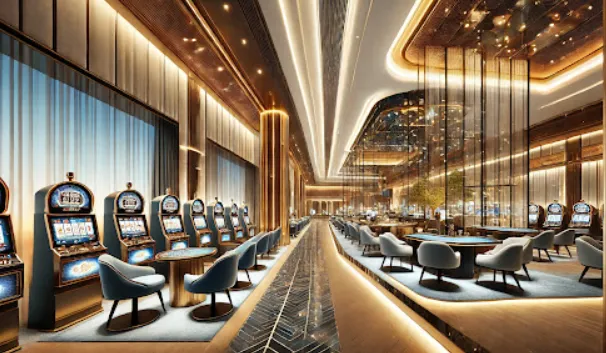
When people walk into a grand casino for the first time, the sheer magnitude of the space often leaves them speechless. The lights shimmer, the sounds echo, and every corner seems designed to draw attention. Placing a bet might be the simplest action in such an environment, but the real magic lies in how the entire setting has been carefully crafted to create a unique experience. Casinos are not merely about games; they are cultural landmarks that blend entertainment, history, and design.
Over the decades, the concept of the casino has evolved into something much more than a venue for games of chance. Today, it is also about architecture, hospitality, and the stories these places tell. From the luxurious halls of Monte Carlo to the futuristic complexes of Macau, each casino carries its own identity. Even those who never place a single bet often find themselves wandering through, admiring the spectacle of artistry and human ingenuity on display.
One of the most striking aspects of casinos is the deliberate use of design to engage the senses. Architects and interior designers work hand in hand to create spaces that are immersive, from intricately patterned carpets to ceilings that stretch toward dazzling chandeliers. These features are not random—they are part of an intentional strategy to create atmosphere. A visitor should feel both energized and comfortable, an unusual balance that only the most successful casinos manage to achieve.
Lighting plays an equally important role. The interplay of warm glows, neon highlights, and spotlit focal points guide the eyes and shape perception. Psychologists note that such spaces are designed to keep guests stimulated without overwhelming them. This careful equilibrium demonstrates the fusion of science and art in modern entertainment environments. The casino, in this sense, becomes a place of continuous performance, where every detail contributes to the larger stage.
Beyond architecture and ambiance, casinos have also grown into cultural destinations. Many incorporate theaters, art galleries, fine dining establishments, and luxury shopping centers. This makes them appealing to a wide spectrum of visitors, including those who have no interest in gambling at all. For many travelers, stepping into a casino is a way to connect with the culture of a city, as these establishments often reflect the spirit and identity of their surroundings.
Take Las Vegas as an example. The city is often called an oasis of imagination, where replicas of global landmarks stand side by side. Within its casinos, one can walk from a Venetian canal to a Parisian street in a matter of minutes. These playful recreations are not only fun but also symbolic of humanity’s desire to merge cultures and dreams into a single experience. The casino, therefore, acts as both a mirror and a canvas for society’s creative ambitions.
Macau, on the other hand, tells a different story. Once a quiet fishing village, it has grown into one of the world’s most iconic destinations for casino tourism. Its architectural marvels rise over the cityscape, blending traditional Chinese motifs with modern design. Visitors encounter not just entertainment but also a sense of history that resonates through every corridor and facade. The casino becomes a cultural bridge, linking past and present in a way that few other places can.
In many ways, casinos embody the human fascination with possibility. They symbolize ambition, imagination, and the thrill of unpredictability. Yet beyond the games themselves, they represent art, culture, and the complexity of human design. To walk through a casino is to step into a world where architecture, psychology, and culture converge. It is not simply about winning or losing—it is about witnessing a carefully orchestrated masterpiece of human creativity.
Ultimately, the enduring appeal of casinos lies in their ability to tell stories without words. They are not static buildings but living environments that evolve with time, reflecting both the aspirations of their creators and the curiosity of their visitors. Whether one engages with the games or simply admires the architecture, the experience leaves a lasting impression. A casino is, at its core, a testament to the ways in which human beings shape spaces that are both functional and profoundly symbolic.
